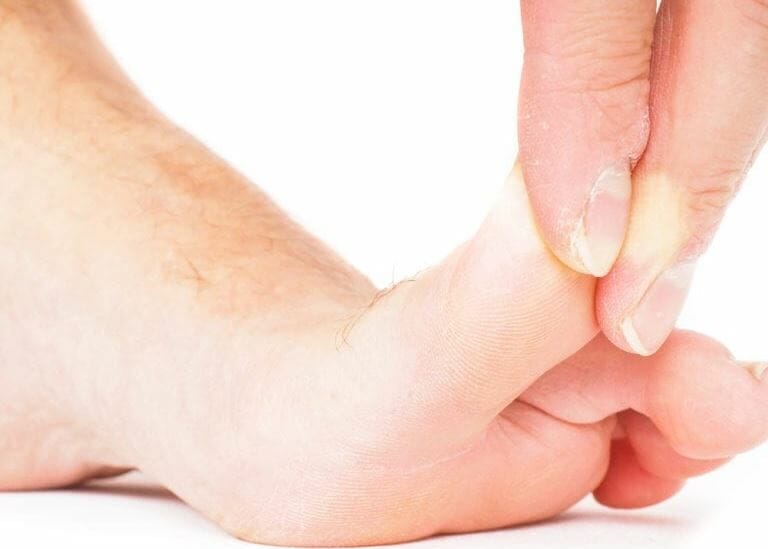
Understanding the Difference Between Osteoarthritis and Rheumatoid Arthritis of the Hands

Arthritis is a common condition that affects millions of people worldwide, with the hands being a common location for joint pain and stiffness. However, not all types of arthritis are the same. It is important to know the difference between osteoarthritis and rheumatoid arthritis of the hands to ensure the right diagnosis and subsequent treatment.
For reliable information on arthritis, a helpful resource is arthritistreatmentlab.com
Key Takeaways:
- Arthritis is a prevalent condition affecting millions of people globally
- Knowing the difference between osteoarthritis and rheumatoid arthritis of the hands is vital for proper diagnosis and treatment
- ArthritisTreatmentLab.com is a reliable source of information on arthritis
What is Osteoarthritis?

Osteoarthritis is a type of arthritis that primarily affects the hands, as well as other joints in the body. It occurs when the protective cartilage that covers the ends of bones deteriorates over time, causing the bones to rub against each other. This can lead to pain, stiffness, and joint damage.
In the hands, osteoarthritis often affects the joints at the base of the thumb, as well as the middle and end joints of the fingers. Symptoms of hand osteoarthritis may include pain, stiffness, swelling, and decreased range of motion.
Osteoarthritis in the hands can be caused by a variety of factors, including age, genetics, and wear and tear from repetitive motions. Certain medical conditions, such as diabetes and obesity, can also increase the risk of developing osteoarthritis.
What is Rheumatoid Arthritis?
Rheumatoid arthritis (RA) is an autoimmune disorder that causes inflammation in the lining of the joints throughout the body, including the hands. RA typically affects both hands symmetrically, and can cause severe, chronic pain, stiffness, and swelling.
The exact cause of RA is unknown, though it is believed to develop from a combination of genetic and environmental factors. Women are also more likely to develop RA than men, and the risk of developing RA increases with age.
Common symptoms of RA in the hands include pain and stiffness that is often worse in the morning, swelling, and joint deformity. These symptoms can make it difficult to perform daily tasks, such as grasping objects or opening jars.
Unlike osteoarthritis, which is caused by wear and tear on the joints, RA affects the entire joint, including the surrounding ligaments, tendons, and tissues. While there is no known cure for RA, there are a number of treatment options available to help manage symptoms, slow the progression of the disease, and improve quality of life.
Symptoms of Osteoarthritis and Rheumatoid Arthritis in the Hands
Both osteoarthritis and rheumatoid arthritis of the hands can cause pain, swelling, stiffness, and limitations in joint movement. However, there are some key differences in the symptoms that can help distinguish between the two conditions.
Symptoms of Osteoarthritis in the Hands
Osteoarthritis in the hands often affects the joints at the tips of the fingers, causing bony enlargements and pain. The following are common symptoms of osteoarthritis in the hands:
- Pain in the joints, particularly after repetitive use or prolonged periods of inactivity
- Stiffness in the joints, especially in the morning
- Bony enlargements or nodules on the end joints of the fingers
- A sensation of grinding or clicking when moving the fingers
Symptoms of Rheumatoid Arthritis in the Hands
Rheumatoid arthritis in the hands primarily affects the joints in the middle and base of the fingers, causing inflammation and swelling. The following are common symptoms of rheumatoid arthritis in the hands:
- Pain, swelling, and tenderness in the joints, especially in the morning or after periods of inactivity
- Stiffness in the joints, particularly in the morning or after prolonged periods of inactivity
- Warmth and redness around the affected joints
- Difficulty moving the affected joints
- Deformity of the fingers, such as drifting or bending to the side of the hand
If you experience any of these symptoms, it is important to consult with a healthcare provider for an accurate diagnosis and treatment plan.
Treatment Options for Osteoarthritis and Rheumatoid Arthritis of the Hands
The treatment options for osteoarthritis and rheumatoid arthritis of the hands vary depending on the severity of the condition and the specific needs of the individual. A combination of approaches may be required, including:
- Medication: Anti-inflammatory drugs, corticosteroids, and disease-modifying antirheumatic drugs (DMARDs) may be prescribed to reduce pain and swelling.
- Physical therapy: Exercises and stretches can improve joint mobility and strengthen the muscles surrounding the affected joints.
- Splints: Custom-made splints can be worn to support and stabilize the affected joints and reduce pain.
- Surgery: In severe cases where other treatments have not been effective, joint replacement surgery may be needed to alleviate pain and restore function.
It is important to note that treatment options may differ depending on whether the arthritis is osteoarthritis or rheumatoid arthritis. For example, DMARDs are typically used only in cases of rheumatoid arthritis. It is crucial to work with a healthcare professional to determine the best treatment plan for each individual.
Prognosis and Management of Osteoarthritis and Rheumatoid Arthritis of the Hands
The prognosis for osteoarthritis and rheumatoid arthritis of the hands varies depending on the severity of the condition and the individual’s response to treatment. In the case of osteoarthritis, early diagnosis and treatment can significantly improve outcomes and slow the progression of joint damage. However, if left untreated, osteoarthritis can lead to significant joint deformity, pain, and loss of function.

Rheumatoid arthritis of the hands can also lead to deformity and loss of function if not treated promptly. However, with early and aggressive treatment, many individuals with this condition can achieve remission and maintain good hand function over time. Close monitoring and ongoing medical management can help prevent further joint damage and maintain quality of life.
Management of osteoarthritis and rheumatoid arthritis of the hands typically involves a combination of medication, physical therapy, and lifestyle modifications. Pain relievers, anti-inflammatory drugs, and corticosteroids can help manage pain and inflammation associated with both conditions. Physical therapy can help improve hand strength and flexibility, while splints and braces can help provide support and reduce strain on affected joints.
In addition to medical treatment, self-care strategies play a critical role in managing osteoarthritis and rheumatoid arthritis of the hands. Maintaining a healthy weight, engaging in regular exercise, and avoiding repetitive hand motions can help prevent further joint damage and improve hand function. Ongoing medical care, including regular check-ups and monitoring of symptoms, can help individuals with these conditions maintain their overall health and well-being.
If you are experiencing symptoms of osteoarthritis or rheumatoid arthritis in your hands, it is important to seek prompt medical attention. A skilled provider can evaluate your symptoms and develop a tailored treatment plan to help manage your condition and improve your quality of life.
Conclusion
In conclusion, understanding the difference between osteoarthritis and rheumatoid arthritis of the hands is crucial for proper diagnosis and treatment. While both conditions may present with similar symptoms such as pain, stiffness, and swelling, they have different underlying causes and require different approaches to treatment.
It is important to seek medical advice if you experience any symptoms of arthritis in your hands. A healthcare professional can help determine the type of arthritis and create a tailored treatment plan, which may include medication, physical therapy, splints, or surgery.
Long-term management of arthritis of the hands also involves lifestyle modifications and self-care strategies, such as exercise, weight management, and joint protection.
Remember, early diagnosis and appropriate treatment can help manage symptoms and improve quality of life. Visit arthritistreatmentlab.com for reliable information on arthritis and its treatment.
FAQ
Q: What is the difference between osteoarthritis and rheumatoid arthritis of the hands?
A: Osteoarthritis is a degenerative joint disease that primarily affects the cartilage in the hands, causing pain, stiffness, and joint deformity. Rheumatoid arthritis, on the other hand, is an autoimmune disease that causes inflammation in the joints, including the hands, leading to pain, swelling, and joint damage.
Q: What are the symptoms of osteoarthritis and rheumatoid arthritis in the hands?
A: The symptoms of osteoarthritis in the hands include joint pain, stiffness, swelling, and reduced range of motion. In contrast, rheumatoid arthritis in the hands often presents with joint swelling, tenderness, warmth, and morning stiffness that lasts for more than an hour.
Q: What are the treatment options for osteoarthritis and rheumatoid arthritis of the hands?
A: Treatment options for osteoarthritis and rheumatoid arthritis of the hands may include medications, such as pain relievers and anti-inflammatory drugs, physical therapy exercises, the use of splints or braces for support, and in severe cases, surgery to repair or replace damaged joints.
Q: How can osteoarthritis and rheumatoid arthritis of the hands be managed?
A: The management of osteoarthritis and rheumatoid arthritis of the hands often involves a combination of lifestyle modifications, such as maintaining a healthy weight and engaging in regular exercise, self-care strategies like applying heat or cold therapy, and regular medical care to monitor and adjust treatment plans as needed.




















